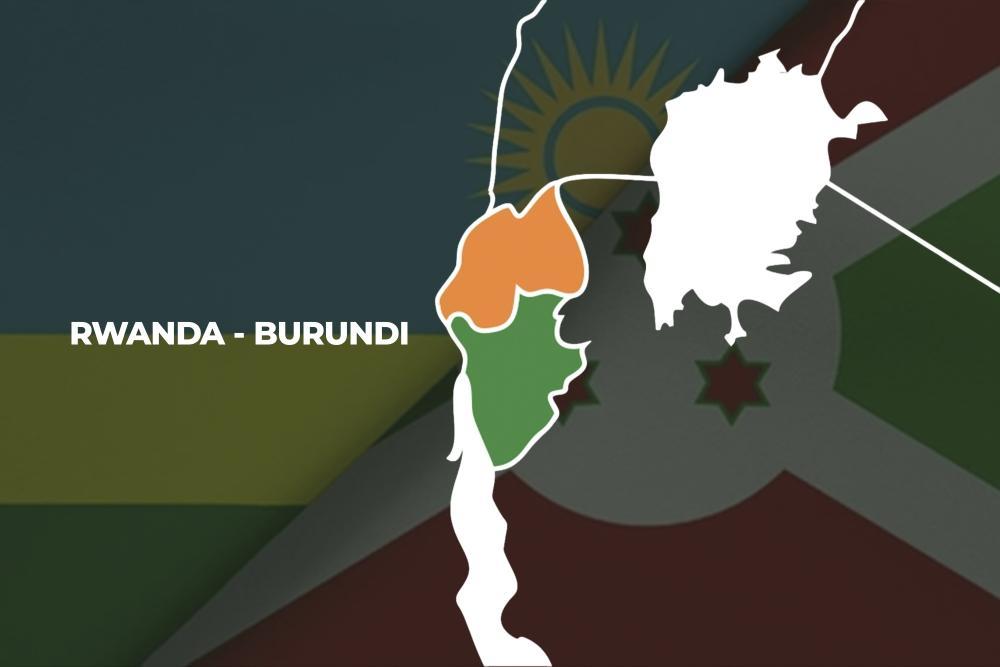Amani Athar
Africa-Press – Rwanda. Rwanda and Burundi are nations that share not only geographic proximity but also intertwined histories. During the colonial era, they were joined under one administrative entity known as Rwanda-Urundi. Long before colonial borders were drawn, both peoples spoke nearly the same language, belonged to the same clans (Banyiginya, Baha, Bega, Bacyaba, Bazigaba, Babanda…) and had a nearly identical culture, traditions, and names. In short, it was like one nation that was simply divided into two kingdoms.
Although today some Burundians may not agree that their kings were from Rwanda, their first, King Karemera, was a descendant of a Rwandan king – King Ndoba, son of Ndahiro. Ndoba had 11 sons; Mujiji, Mugunga, Mukobwa, Muturagara, Munyiga, Nyamuhanzi, Mupfumfu, Cyambwe, Biharage, Cyoba and Neza. From these princes were born different great families in the history of Rwanda, including the Bakobwa, the Baturagara, the Bajiji and the Bagunga, but also the family of Abatare, that fathered the kings of Burundi. Abatare are descendents of Karemera Ntare Rusatsi, son of Sinzi, son of Nyamuhanzi, son of Ndoba, the 11th King of Rwanda.
According to historical accounts, Rwanda and Burundi have been at war with each other many times. But, for the sake of their citizens, Rwanda’s King Mutara I Semugeshi, and Burundian King Mutaga II Nyamubi recognized the need for ending the continuous conflicts and wars through non-violent means. They met at Nyaruteja and made a non-aggression pact. Since then, the place is called Ku Twicarabami twa Nyaruteja (the Kings’ seats of Nyaruteja). This historical pact was immortalized by a song called ‘Kaze Rugamba’ sung to welcome King Mutaga, nicknamed ‘Rugamba’.
When you read many stories about this pact of Nyaruteja, known in Rwanda by the name of Imimaro, the man who thought about it and negotiated it is ignored. This man is called Gahenda, son of Burigande, of Ngonga, who, according to Léon Delmas, in his book Généalogies de la noblesse (les Batutsi) du Rwanda, he was the Prime Minister of King Mutara I Semugeshi. During the reign of King Ruganzu I Bwimba, there was an Umwiru named Mpande ya Rusanga, who brought innovation in the governance of the Kingdom by introducing what is known today as a Prime Minister, a new role of the Special Advisor to the King, who would second the Queen Mother. This role was first given to Gahenda, son of Burigande.
One of Gahenda’s achievements as the Prime Minister of King Mutara I Semugeshi was to secure the pact of Ku Twicarabami twa Nyaruteja. He knew that the kings of Rwanda and the kings of Burundi shared ancestry and were brothers and should not continue to be at war with each other.
He advised the King to meet with his Burundian counterpart to discuss how the two kingdoms could once and for all put an end to their mutual attacks. King Semugenshi accepted the advice. He then sent Gahenda to Burundi to negotiate the deal. On hearing the good proposal from his Rwandan counterpart, King Mutaga II Nyamubi also accepted. Both kings met at Ku Twicarabami twa Nyaruteja, in today’s Nyanza sector, Higiro cell, Akabakene village of Gisagara District, Southern Province.
At Nyaruteja, the two kings made a pact of non-aggression in which they agreed that if Rwanda was attacked by any other kingdom, Burundi would not assist the enemy of Rwanda, or if Burundi was attacked by any kingdom, Rwanda would not aid the enemy of Burundi.
Although the pact was fully agreed upon, this did not prevent the kings of Burundi from violating it by attacking Rwanda. Almost 100 years after the pact, the Burundian king Mutaga III Sebitungwa violated the pact. Mutaga III Sebitungwa joined a coalition of kings including Kimenyi V Getura of Gisaka, Gahaya II Muzora of Ndorwa, and Nsoro III Nyamugeta of Bugesera, against Rwanda. And almost 200 years later, King Ntare III Kivimira also launched attacks on Rwanda.
The pact of non-aggression between the two kingdoms was renewed by King Kigeli IV Rwabugiri of Rwanda and King Mwezi IV Gisabo of Burundi, possibly around 1880.
Both kings Rwabugiri and Gisabo are known for defending their people against slave traders, their staunch resistance to German occupation, and refusing to allow missionaries into their respective kingdoms. Did this resistance against colonial occupation influence their decision to renew the pact of Nyaruteja?
In the current situation between the two countries, despite Rwanda’s efforts to live in peace with its neighbours, the Burundian leaders, as did kings Mutaga III Sebitungwa and Ntare III Kivimira, have ended up siding with the Democratic Republic of Congo and FDLR, a terrorist militia responsible for the 1994 Genocide against the Tutsi, against Rwanda. Do we need another renewal of the Nyaruteja non-aggression pact after almost 500 years of the initial agreement to remind current Burundian leaders that peace with its neighbours is better than war?
The historical pact of Nyaruteja teaches a powerful lesson of reconciliation, peace, and respect between neighbours. Nyaruteja should be preserved as a historical marker and heritage that will continue to teach future generations that for peace to be sustainable, it must be embraced by the people and leaders of the nations involved.
Source: The New Times
For More News And Analysis About Rwanda Follow Africa-Press






